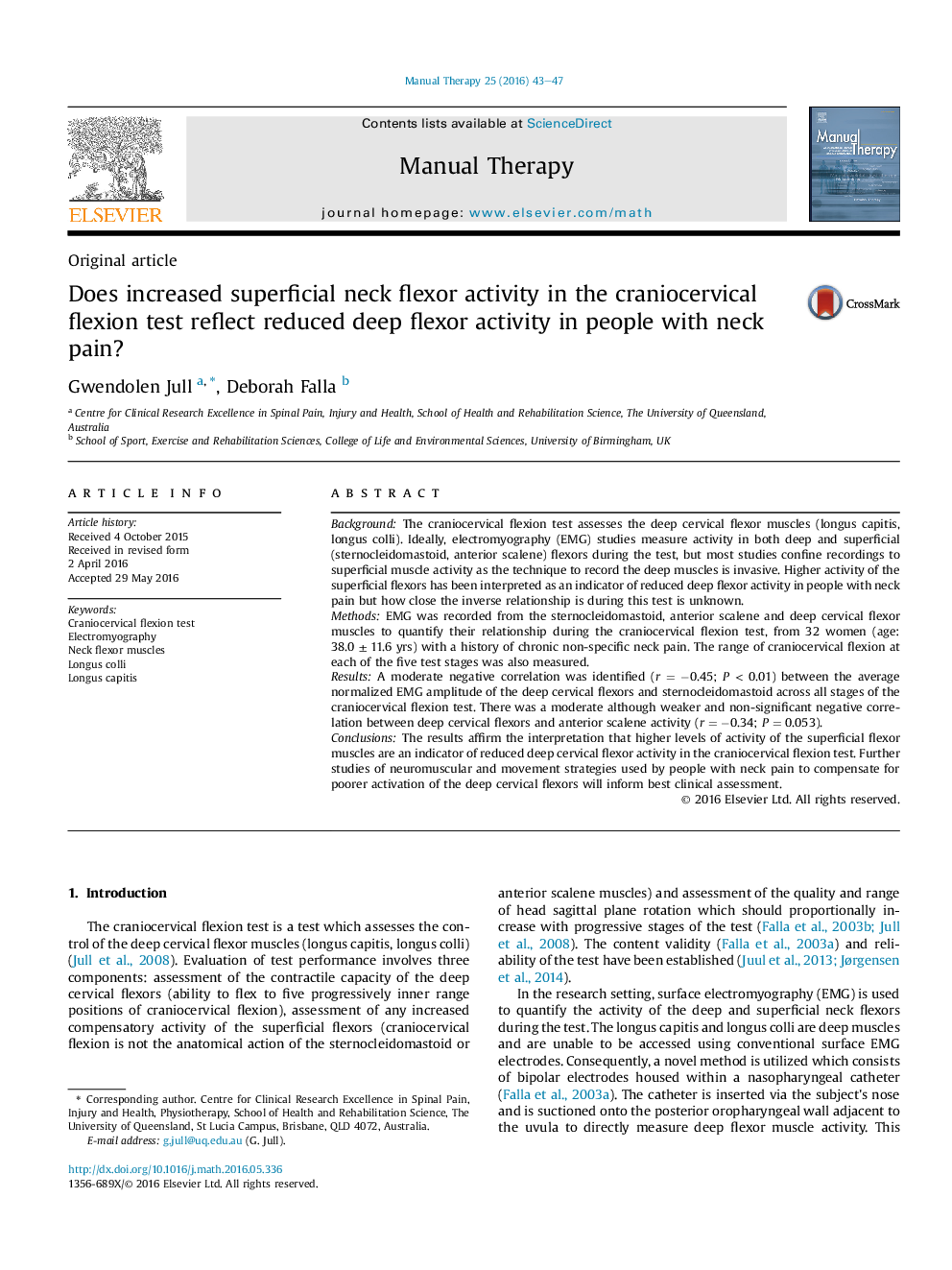| کد مقاله | کد نشریه | سال انتشار | مقاله انگلیسی | نسخه تمام متن |
|---|---|---|---|---|
| 2624537 | 1563093 | 2016 | 5 صفحه PDF | دانلود رایگان |
• Analysis of cervical flexor muscle activity in the craniocervical flexion test.
• Higher superficial flexor activity correlates with lesser deep flexor activity.
• Evaluation of the deeper flexors may rely on superficial flexor evaluation.
BackgroundThe craniocervical flexion test assesses the deep cervical flexor muscles (longus capitis, longus colli). Ideally, electromyography (EMG) studies measure activity in both deep and superficial (sternocleidomastoid, anterior scalene) flexors during the test, but most studies confine recordings to superficial muscle activity as the technique to record the deep muscles is invasive. Higher activity of the superficial flexors has been interpreted as an indicator of reduced deep flexor activity in people with neck pain but how close the inverse relationship is during this test is unknown.MethodsEMG was recorded from the sternocleidomastoid, anterior scalene and deep cervical flexor muscles to quantify their relationship during the craniocervical flexion test, from 32 women (age: 38.0 ± 11.6 yrs) with a history of chronic non-specific neck pain. The range of craniocervical flexion at each of the five test stages was also measured.ResultsA moderate negative correlation was identified (r = −0.45; P < 0.01) between the average normalized EMG amplitude of the deep cervical flexors and sternocleidomastoid across all stages of the craniocervical flexion test. There was a moderate although weaker and non-significant negative correlation between deep cervical flexors and anterior scalene activity (r = −0.34; P = 0.053).ConclusionsThe results affirm the interpretation that higher levels of activity of the superficial flexor muscles are an indicator of reduced deep cervical flexor activity in the craniocervical flexion test. Further studies of neuromuscular and movement strategies used by people with neck pain to compensate for poorer activation of the deep cervical flexors will inform best clinical assessment.
Journal: Manual Therapy - Volume 25, September 2016, Pages 43–47
